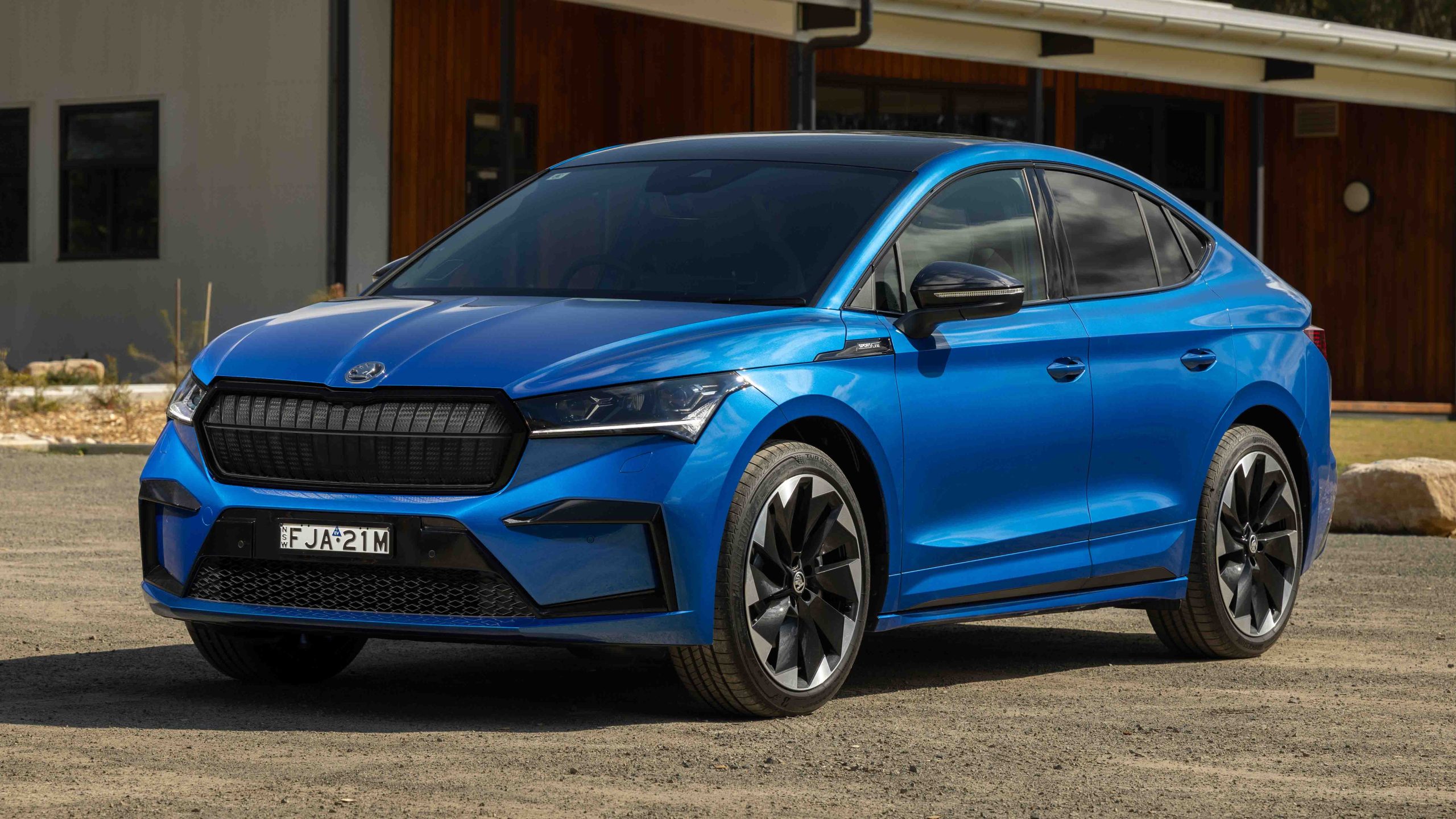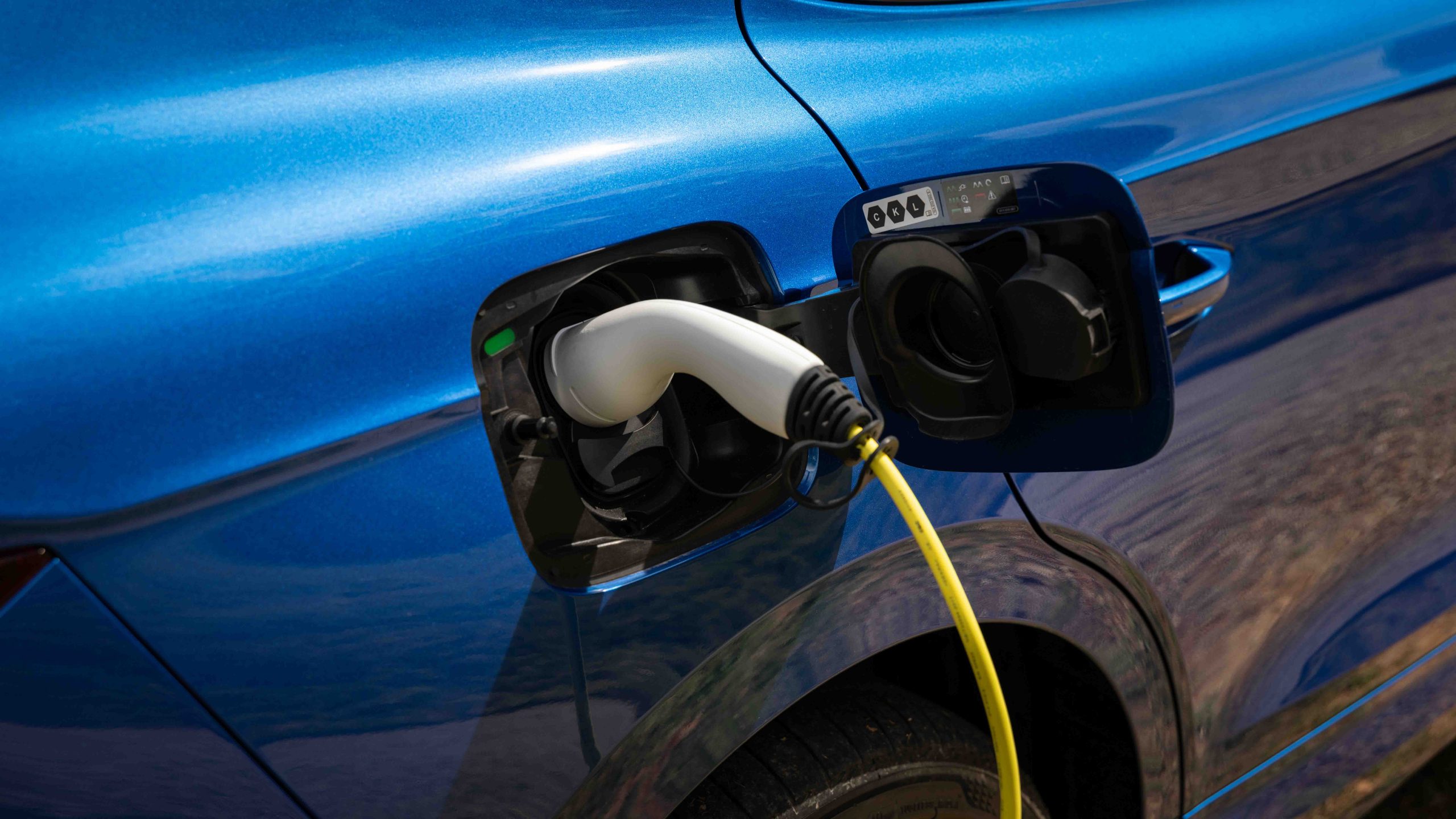-
Car Reviews
- Car News
-
Car Comparisons
Latest comparisons
- Chasing Deals
Skoda’s well-resolved RS performance cars have developed a cult following. Fans will be relieved that the inaugural electric RS, the Enyaq, feels so familiar.
Think Skoda RS and most car enthusiasts will envisage an attainable cult car of our generation—the Octavia RS that combines a practical wagon or liftback body to a Golf GTI’s turbo engine and mechanical limited-slip diff for front-drive family fun.
You probably don’t think of a 2250kg, all-wheel drive electric SUV in a shade of fluoro tennis ball green.
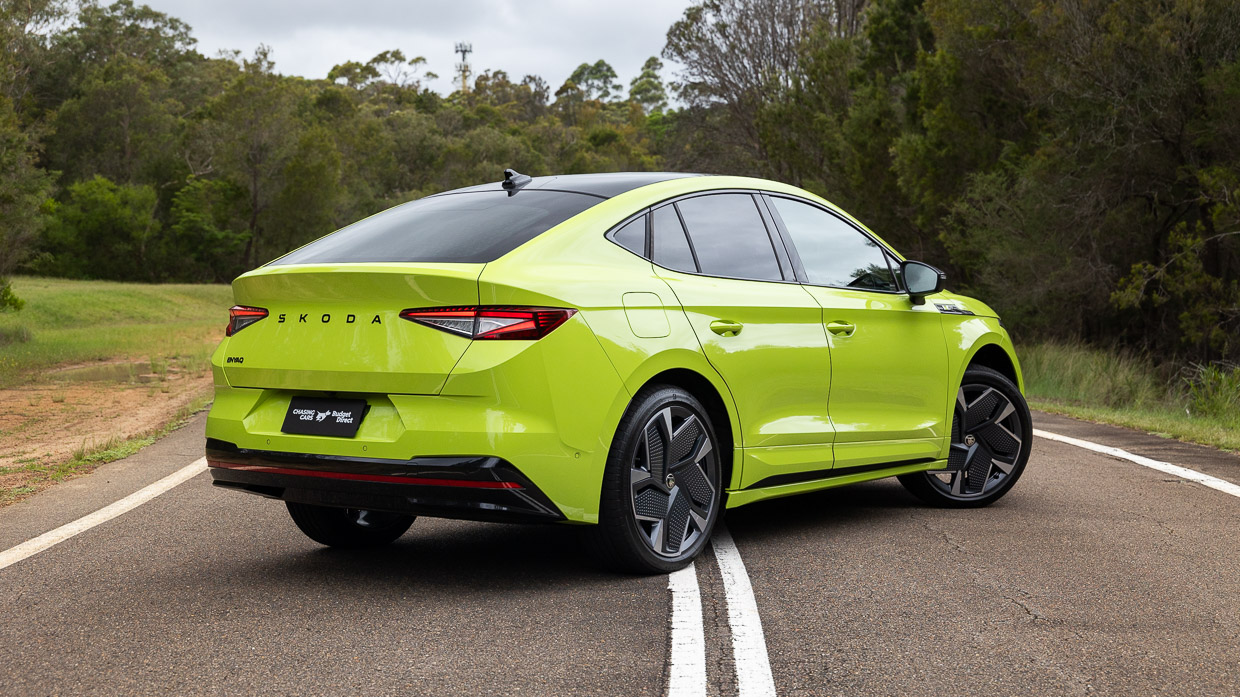
Yet that’s exactly what the new Skoda Enyaq Coupe RS is—a 250kW, five-seat electric SUV that, on paper, risks diluting the RS brand into just another electric crossover.
But while the spec sheet might not immediately evoke Fabia, Octavia, or even Kodiaq RS hits of the past, surprisingly adept chassis tuning means the Enyaq RS still feels like part of the family.
At $83,990 before on-road costs, it’s probably unfair to call the hottest Enyaq a sibling to the $25,000-cheaper Octavia RS.
But in the way this upper-midsize EV rides, steers, and devours country roads, it at least feels like a cousin—delivering the kind of practicality, fluency, and enthusiasm we’ve come to expect from the Czech brand’s Rally Sport line.
2025 Skoda Enyaq Sportline RWD
Alongside our test of the Enyaq RS, we also drove an Enyaq Sportline—the 210kW, rear-drive entry variant—for comparison.
Most buyers will find the $14,000-cheaper Sportline sufficient, but the RS’s visual presence and exclusive all-wheel-drive setup will convince some to splash out, particularly those upgrading from an all-paw Kodiaq RS petrol or diesel.
Skoda remains a niche European brand in Australia, outsold seven-to-one by parent marque Volkswagen in 2024. However, those in the know, know, and there’s usually strong value to be had—compared to an equivalent VW, Skoda models are often cheaper, larger, and better-trimmed.
In this case, the latter two attributes hold true.

Volkswagen’s ID.5 GTX—the most direct equivalent to the Enyaq RS—lands soon.
This coupe-styled electric SUV shares the same 77.0kWh usable NMC battery and 250kW dual-motor powertrain.
The velour-trimmed ID.5 GTX starts at $72,990 before on-road costs, while the plush, leather-lined Enyaq RS is half a size larger—but $11,000 more expensive.
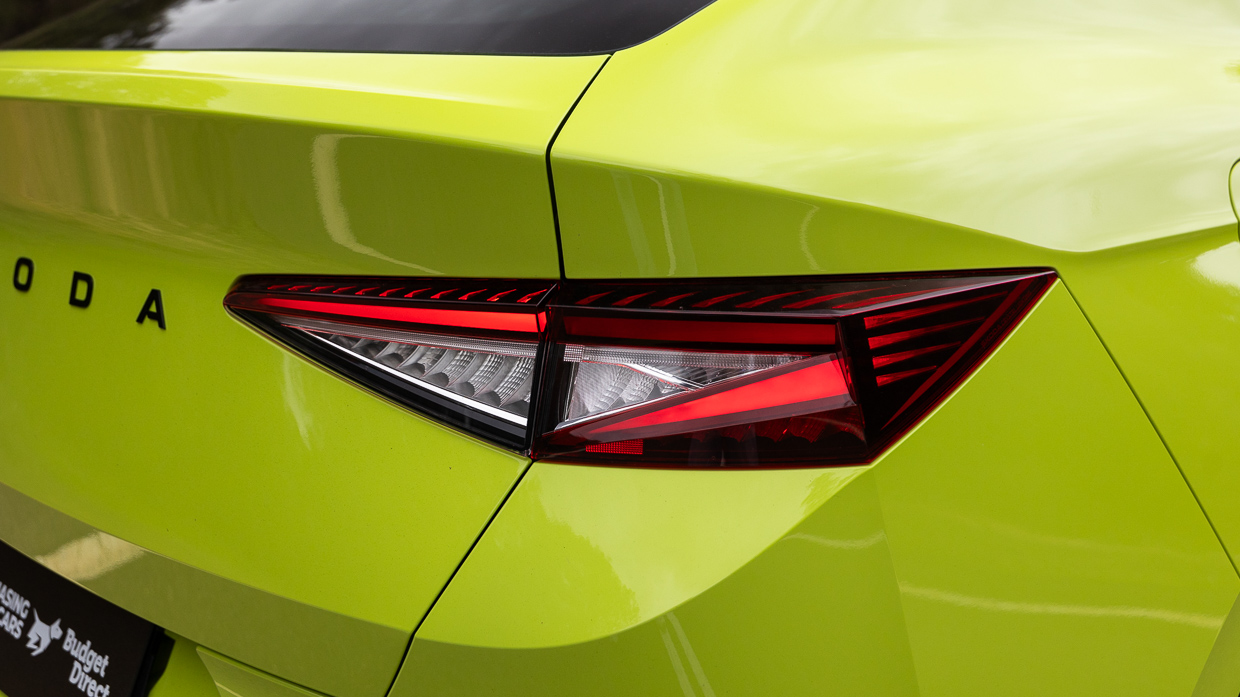
At this price point, the Enyaq RS will trade not only on spirited performance—which we found impressive—but also on higher perceived quality and a suite of luxuries absent from the segment’s best-seller, the Tesla Model Y Performance.
That car is currently on hiatus as it undergoes a mid-life refresh, but its last retail price was $82,990 before on-road costs.
You may need to be a Skoda diehard for the timing to be right to purchase an Enyaq RS.

Production began in early 2022, but a powertrain upgrade improving efficiency and power to 250kW was announced in December 2023.
Australia is now—in early 2025—receiving one of the final batches of the pre-facelift Enyaq RS, complete with this technical update.
If it isn’t delayed (and Volkswagen Group Australia launches have rarely seemed to run to planned timing lately), the facelifted Enyaq will arrive in the third quarter of 2025, introducing a more practical, SUV-style body alongside the current Coupe-only lineup.

Depending on demand for the first examples, Skoda Australia will need to clear the decks of this ‘Limited Edition’ pre-facelift before the update lands.
If there are deals on the table, a pre-facelift Enyaq RS could be a sharp buy—especially considering the facelift retains the same motors and battery, while offering only a minor range increase.
Measuring 4653mm in length, the Enyaq Coupe RS is similar in size to a Hyundai Ioniq 5, bigger than Volkswagen’s incoming ID5, but smaller than the Tesla Model Y. It feels wide but is dimensionally a comfortable in-betweener in the midsize electric SUV segment.
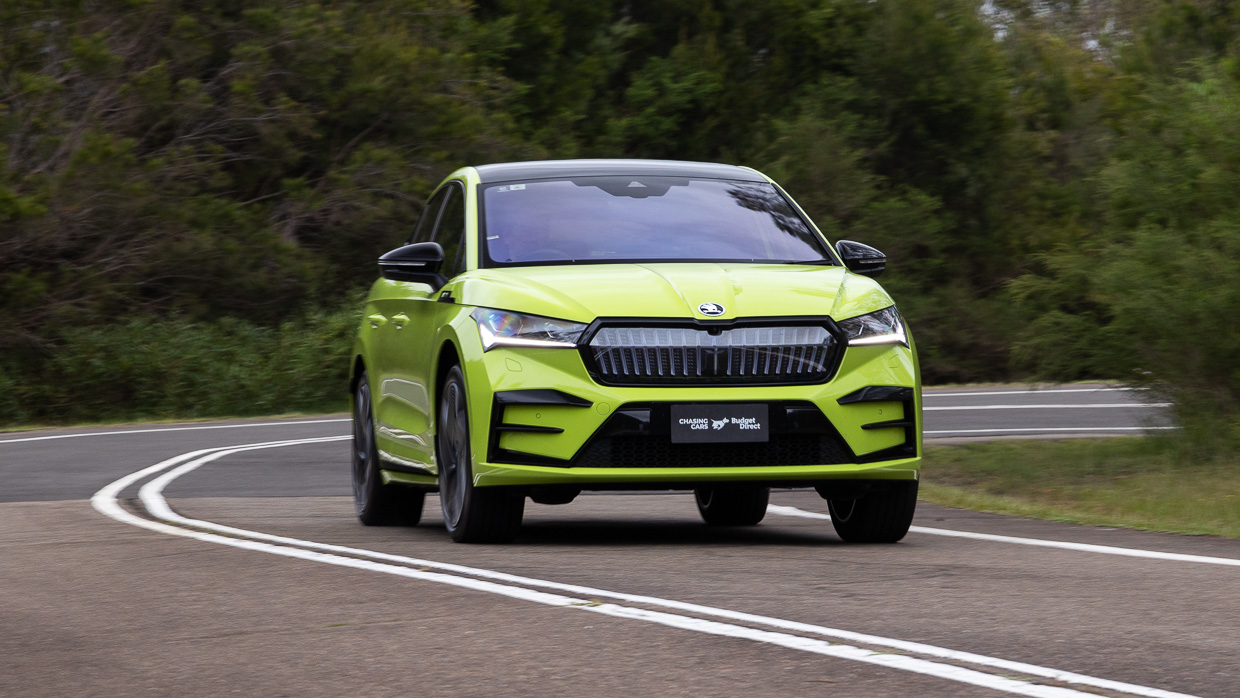
Here’s the lay of the land regarding the hot Enyaq’s pricing relative to the competition (at the time of writing in February 2025):
Two key distinctions here: first, the Enyaq RS lands fully loaded in Australia (without a single cost option) whereas the likes of the Polestar 2 require option packages to feel premium; second, while the market waits for a refreshed Tesla Model Y Performance to be revealed, the Enyaq is certainly more athletically-calibrated than the Model Y Long Range.
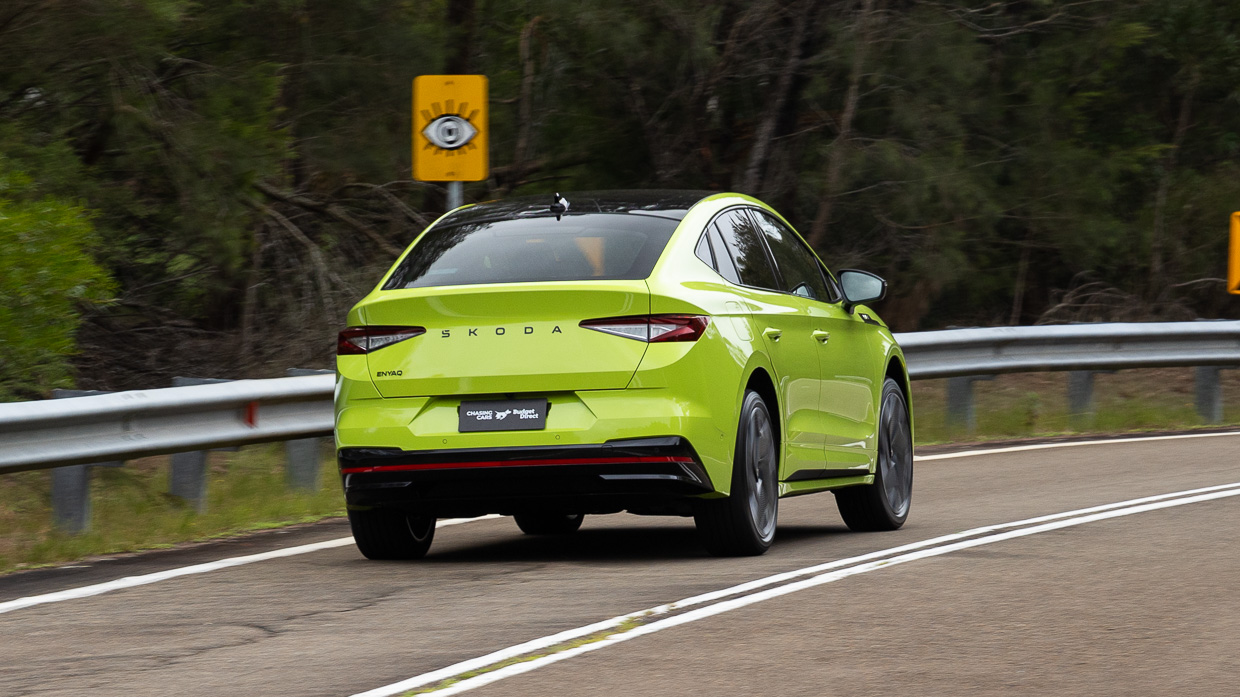
Standard features on the Enyaq Coupe RS take in:

Like the Ioniq 5 and EV6, however, the 250kW Enyaq RS doesn’t immediately look like a ‘steal’, and the Volkswagen ID5’s price point is slightly awkward for the Skoda—but over that car the Enyaq RS does have larger alloys and leather seats, as well as being larger dimensionally (+71mm length, +27mm width).
The only option available to Australian buyers of the Enyaq Coupe RS is the exterior paint—and none of the hues attract a premium. Mamba Green (as applied to our tester) and Magic Black are solids; Velvet Red, Race Blue, Graphite Grey and Moon White are metallic.

Unless you are an RS junkie, it’s probably not necessary to spend more than the lesser 210kW Sportline asks ($69,990 plus on-road costs). That model is reasonably equipped but can be further optioned with the Ultimate Pack ($6000) which brings many of the luxuries standard on RS including leather, Canton stereo, adaptive dampers, and head-up display.
On the road, the fastest Enyaq RS feels like an RS in the way its adaptively damped suspension and electronic power steering have been tuned and calibrated—but in all other respects, it’s simply the most refined Skoda RS model ever.
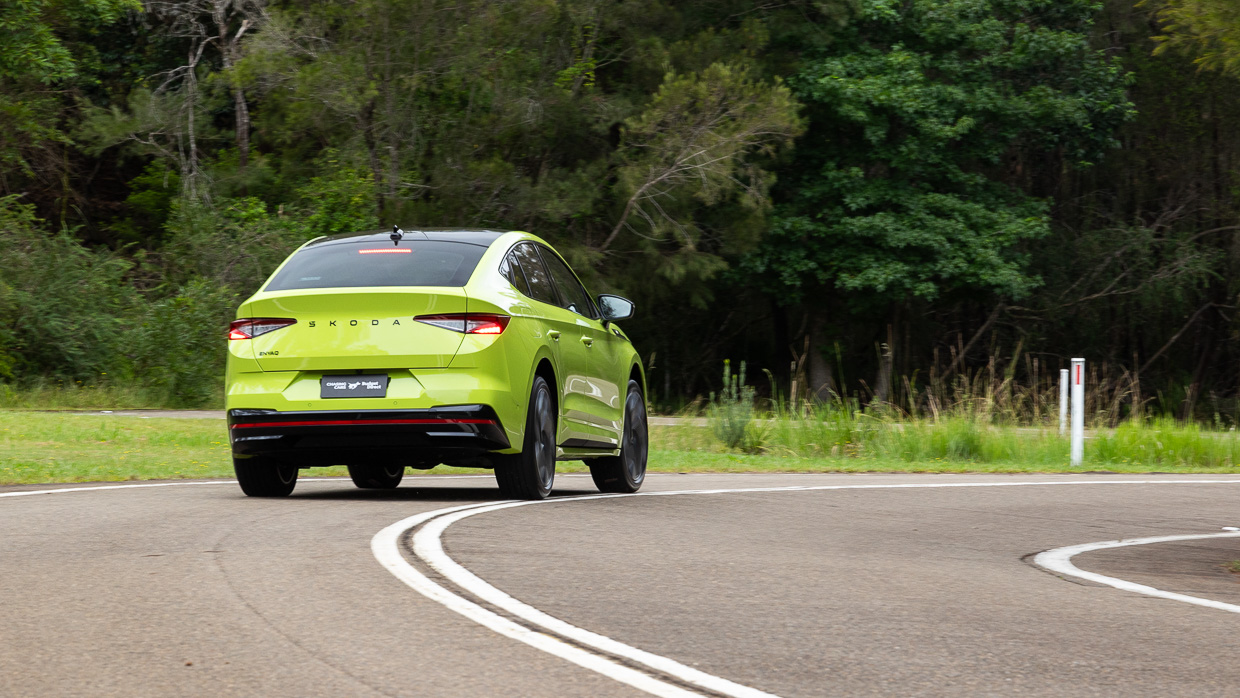
These newfound levels of refinement may not appeal if you’re coming from a decade-old Octavia RS, where firm suspension and relatively minimal cabin sound deadening were still hallmarks of fast Skodas.
But in the intervening years, Skoda has undergone quite the glow-up—both dynamically and in perceived cabin quality.
You’d never call a Kodiaq RS unrefined, but until recently, you could still buy an Octavia RS with cloth seats and passive suspension, recalling simpler times. However, that specification has now been phased out, effectively meaning RS now stands for ‘Rather Sophisticated’ rather than ‘Rally Sport’.
No-frills might be gone, but pace and engaging handling remain.
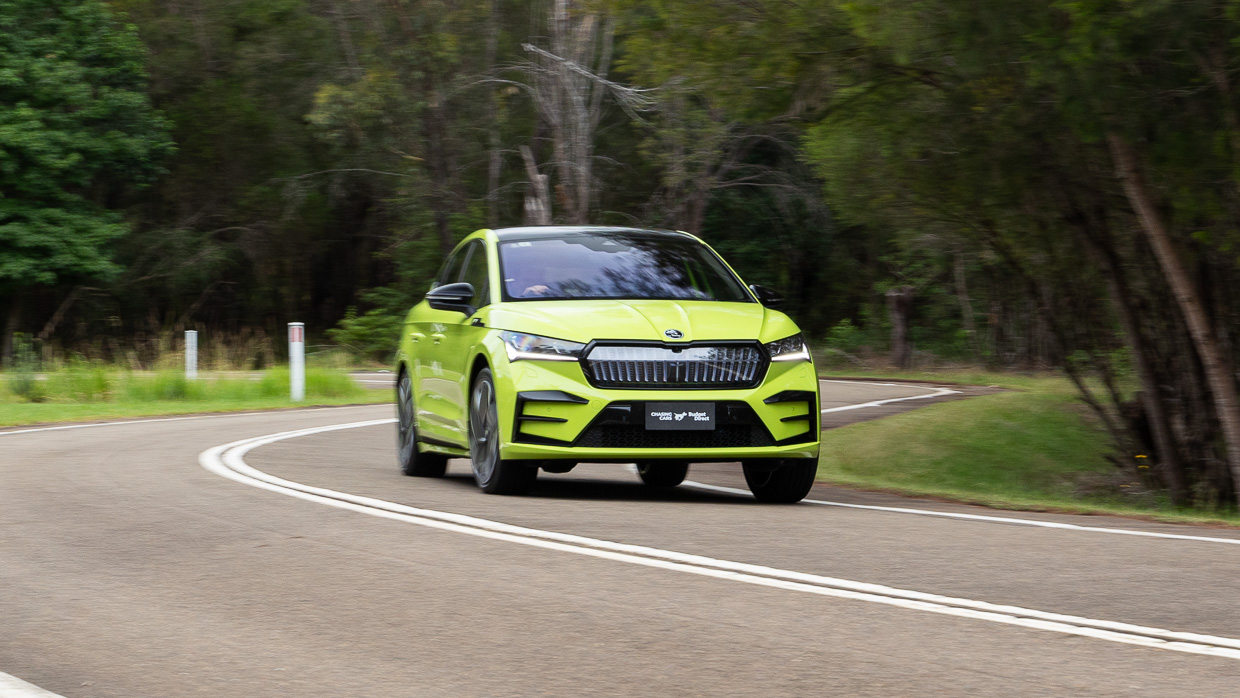
The Enyaq RS’s powertrain sets a new RS benchmark for silken muscularity, with an immense 679Nm of combined torque from the dual-motor setup defining much of the driving experience.
With 250kW of combined power, performance is sufficient but not excessive.
At around 2250kg unladen, the power-to-weight ratio is inferior to an Octavia RS (111kW/tonne vs 125kW/tonne), but instant motor response, immense torque, and all-wheel drive enable a 0-100km/h time of 5.4 seconds—quicker than the 195kW Octavia RS (6.4 seconds).

Still, the Enyaq RS’s performance is approachable rather than intimidating. Torque surges in rapidly yet smoothly from rest; compared to the whip-crack response of the Tesla Model Y Performance (378kW, 3.7 seconds 0-100km/h), the Enyaq RS is certainly slower—but it’s also more comfortable and easier to drive quickly.
That’s even more true of the Skoda’s chassis, which is outstanding in the 210kW Sportline—even on that model’s standard passive dampers—while also being well-tuned and capable of handling more power and pace in the RS version.
Excellent body control, precise wheel control, and strong mechanical grip mean corners can be attacked with real confidence.
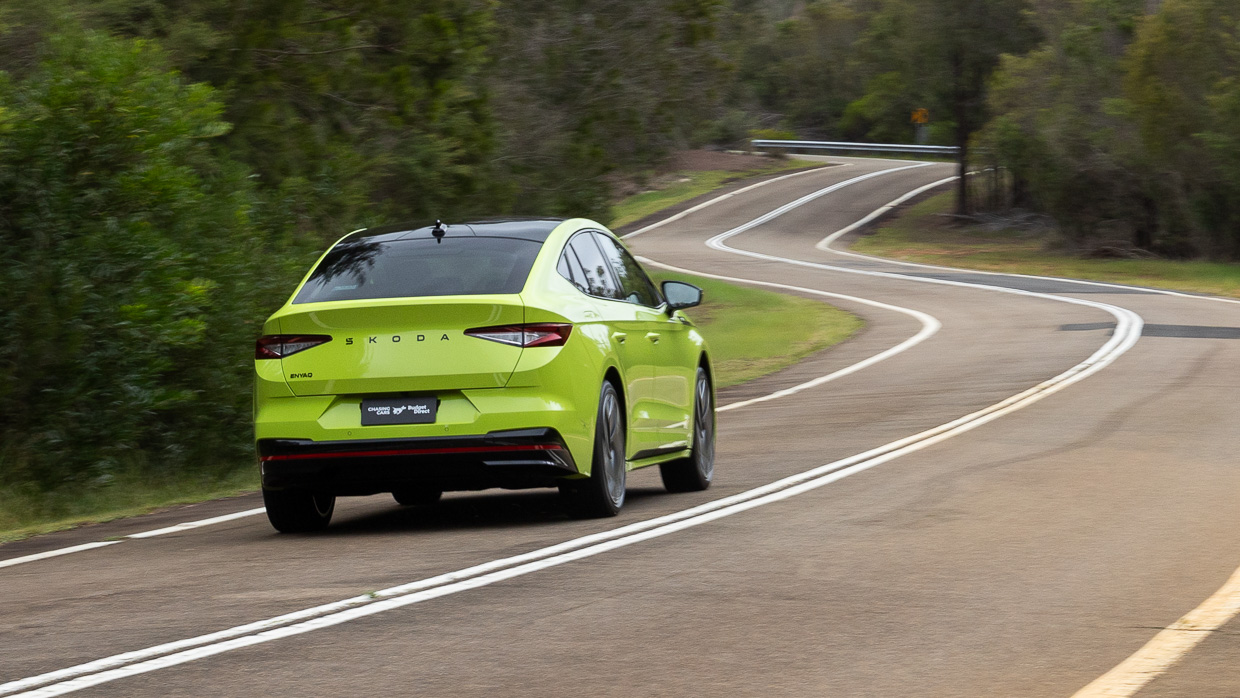
Steering feel is pleasant, with an intuitive ratio and nice off-centre response, delivered through a lush, perforated leather wheel with paddle shifters to adjust regenerative braking levels.
We preferred ‘B’ mode in town for heavier regen, while on country roads, ‘D’ mode felt more appropriate with low or medium regeneration.
Concerns about a harsh ride due to the Enyaq’s range-wide 21-inch alloy wheels would be understandable—but unfounded. Even the passively damped Sportline offers a firm yet compliant ride.
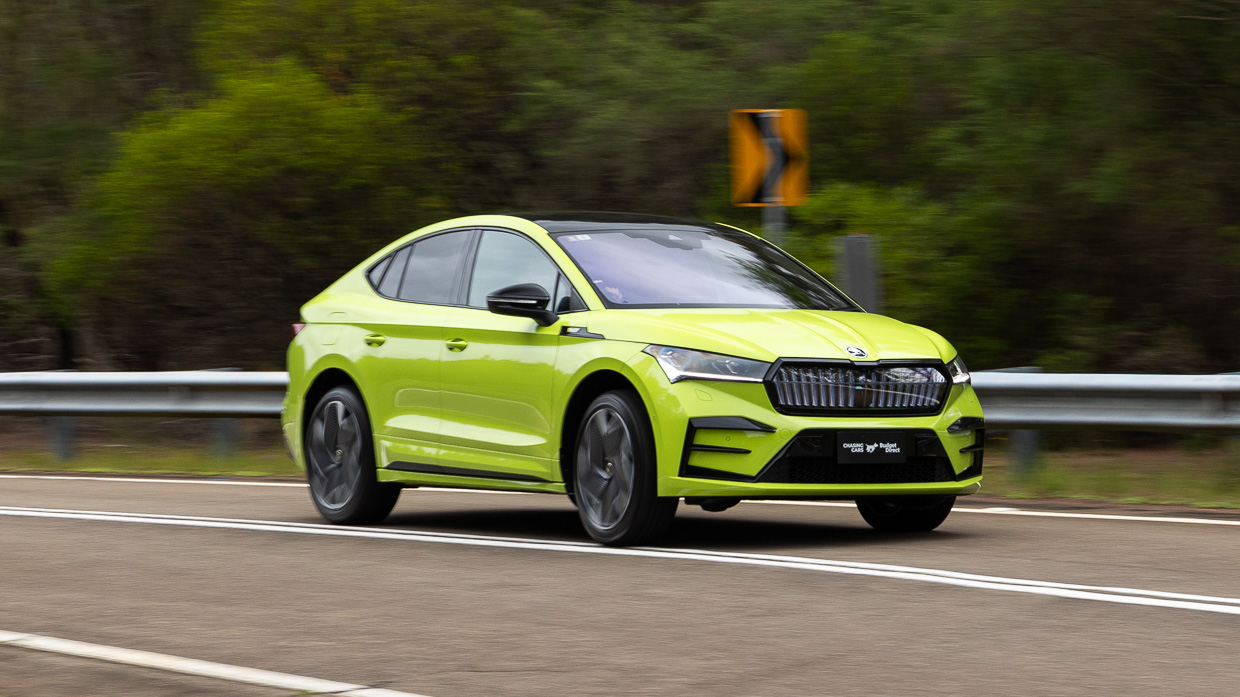
However, that model’s optional 15-stage adaptive dampers—standard on the RS—deliver superb ride quality, rounding off square-edge bumps exceptionally well.
Cabin refinement is good, but not perfect, with some road noise from the wide tyres making its way inside. However, safety system tuning is well-executed, with smooth adaptive cruise control, subtle yet effective lane-centring, and a helpful 360-degree parking camera—which you’ll want, as the Enyaq RS is quite large.
With more Volkswagen Group electric cars now available in Australia on the shared MEB modular electric platform, Skoda’s ability to blend mandatory interior components with high-quality, attractive materials to a greater degree than other Group brands stands out.
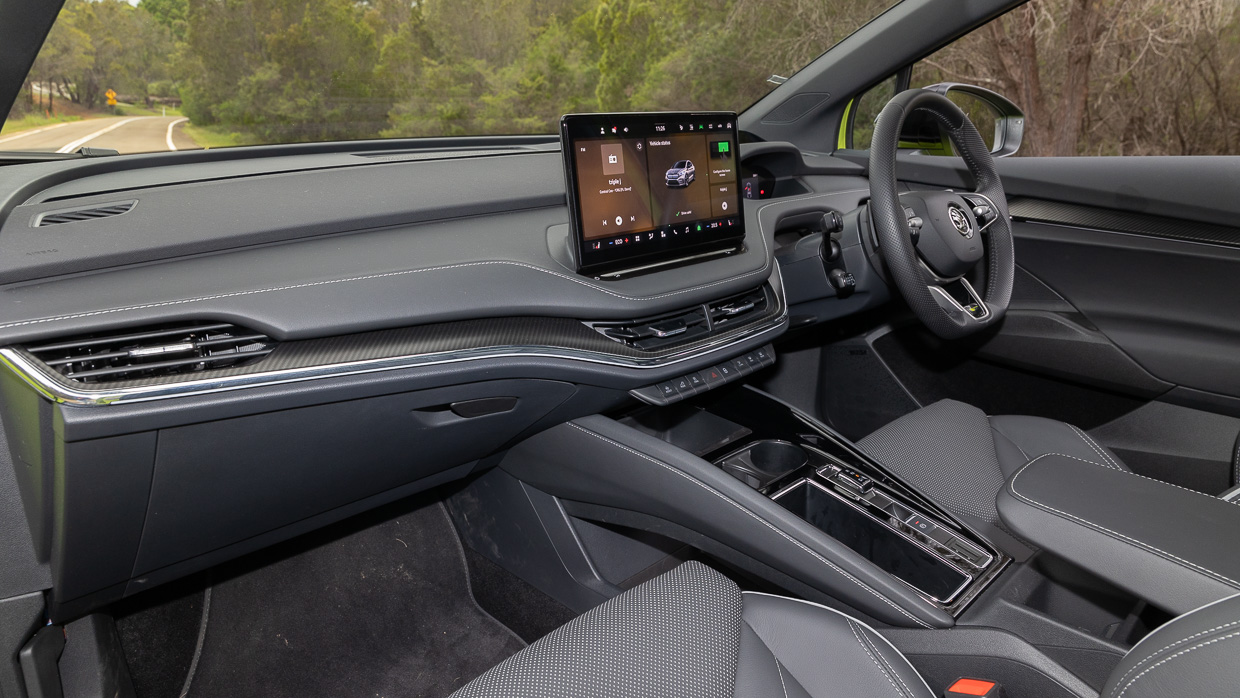
Even the entry-level $69,990 Enyaq—with no options—boasts a noticeably plusher interior than the plastic-laden Audi Q4 e-tron (from $84,900 plus on-road costs).
And while Skoda has traditionally been Volkswagen’s value brand, the Enyaq’s cabin—with perforated leather and knurled switchgear—feels more sophisticated than the Volkswagen ID4 (from $59,990).
The Enyaq RS adds further refinement, with excellent sports seats trimmed in black leather as standard. However, the Sportline’s standard microfleece trim deserves credit for its premium feel and superior comfort under the Australian sun.
No Australian Enyaq currently offers seat cooling – though the high-end L&K trim overseas does allow that option.
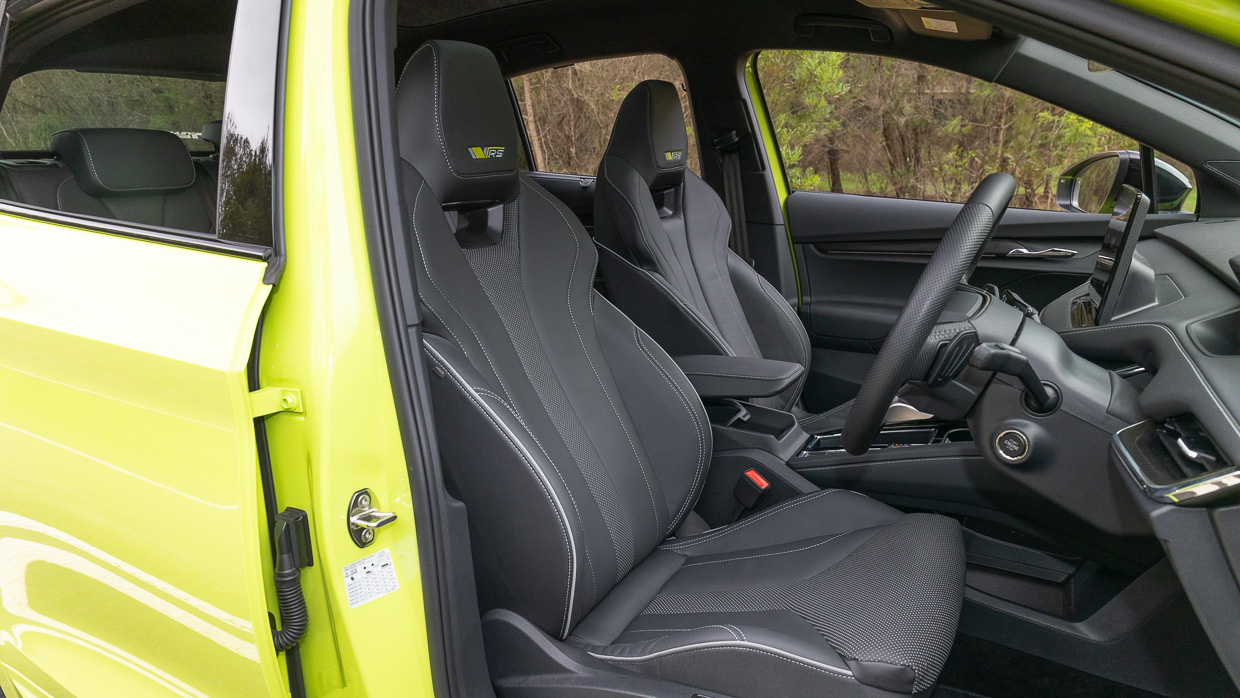
Beyond the power-adjustable, heated, memory front seats (with a massage function for the driver) and the luxurious leather wheel with physical switchgear, it’s the dashboard’s presentation and feel that elevate the Enyaq RS.
A leather-like finish with visible stitching attractively frames a crisp, generous 13-inch touchscreen.

Skoda’s new Flow HMI operating system offers snappy performance – handy, given that climate controls are housed within it.
Wireless Apple CarPlay and Android Auto come standard, but Skoda and Volkswagen models in Australia still lack the online connectivity enjoyed by European customers—a feature many rival brands already offer locally.
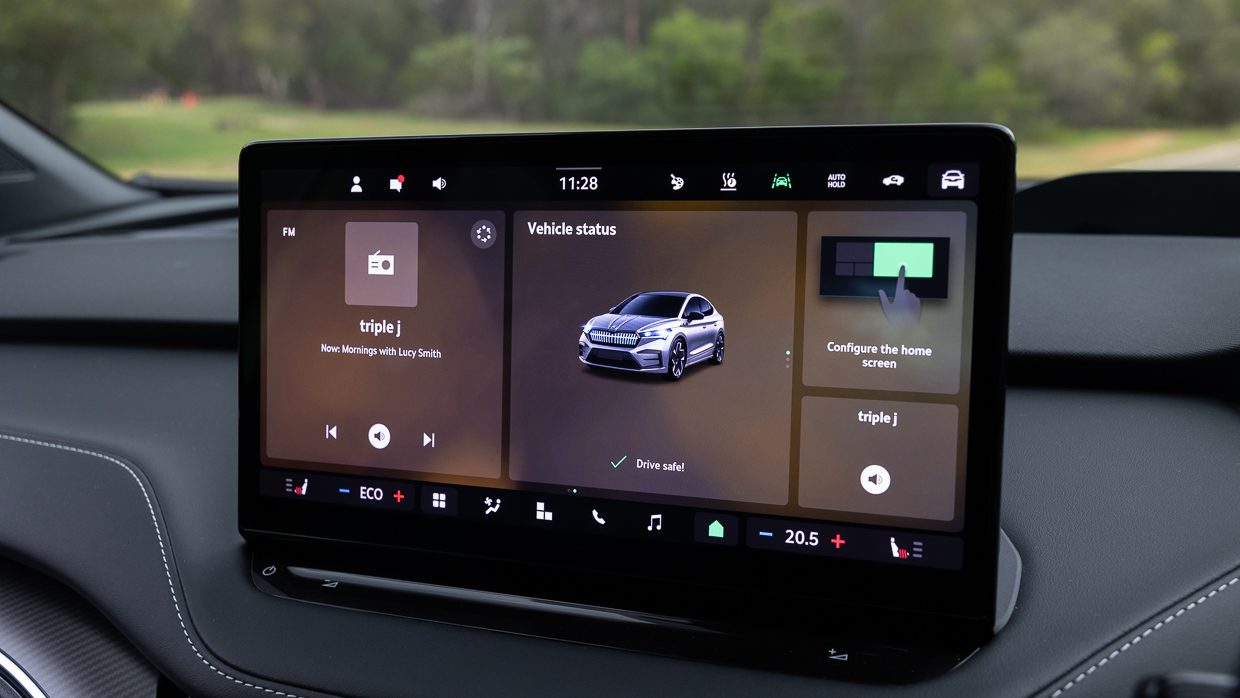
A stopgap smartphone app will soon be rolled out for Volkswagen Group EVs in Australia, but even this lacks features compared to the full connectivity stack available overseas.
Why this issue remains unresolved has never been fully explained; when Tesla, BMW, Hyundai, Kia, BYD, and others have already delivered full connectivity, it’s simply not good enough.
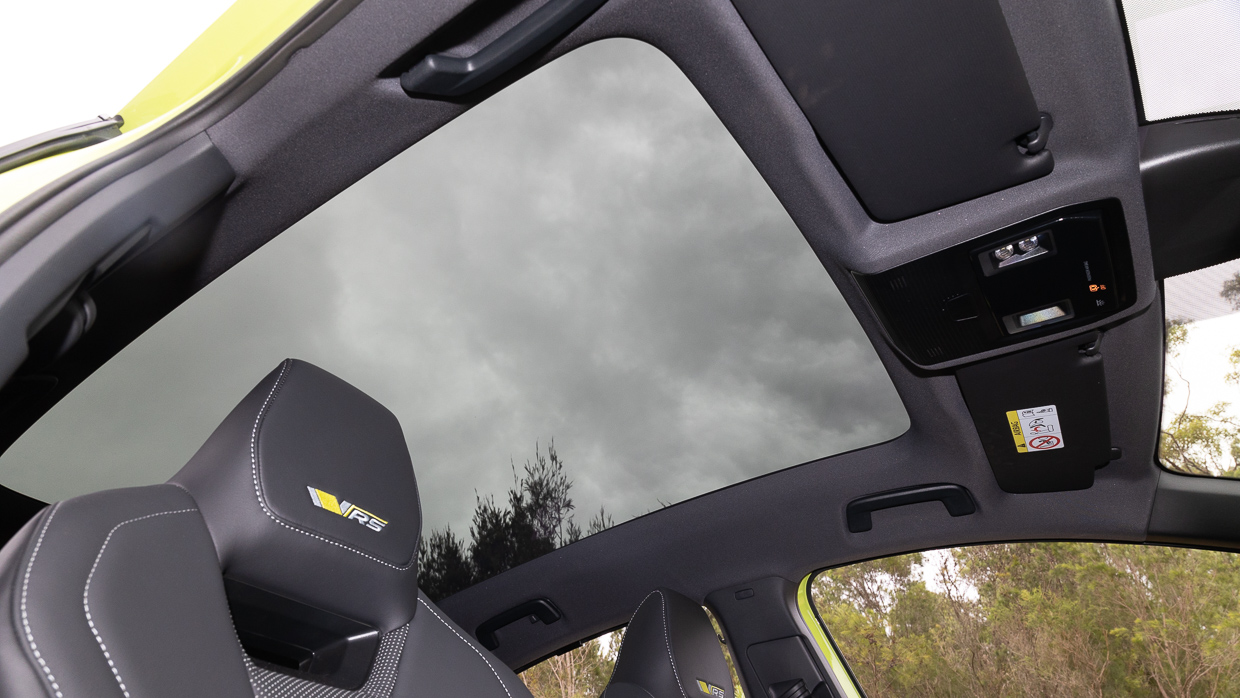
At least Flow HMI allows scheduling of pre-departure cabin cooling—a useful feature, as the Enyaq Coupe can heat up significantly on warm days due to its standard, fixed glass roof.
A sunblind accessory is available, and you’ll likely want to use it for at least half the year.
Other tech elements are functional but unremarkable.
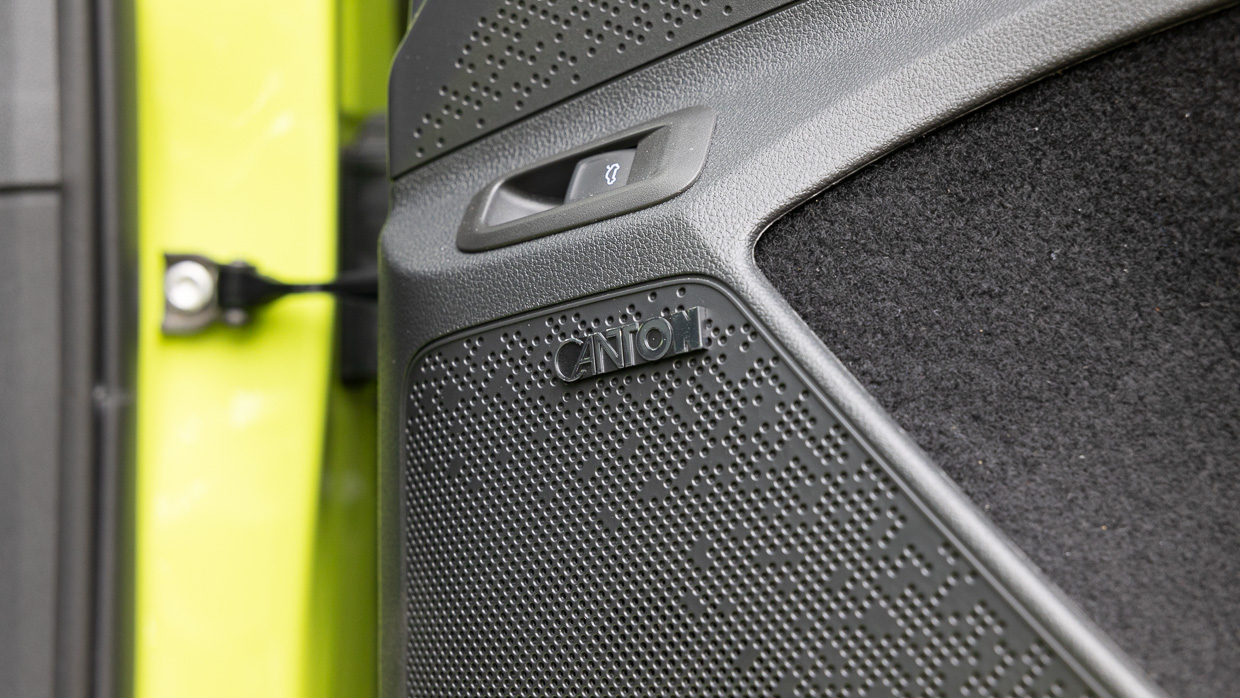
With the exception of Audi models, the MEB platform imposes a small five-inch driver display, showing only speed, trip data, navigation prompts, and adaptive safety information—a noticeable step down from the full Virtual Cockpit in the Kodiaq RS. The 12-speaker Canton system is of acceptable quality.
The big doors open wide—and the front ones house Skoda’s signature hidden umbrellas.
The second row is genuinely family-sized: the Enyaq’s length and 2,768mm wheelbase unlock substantial rear legroom, while headroom and toe room are excellent. Even the middle seat is actually usable—a rarity in this segment.
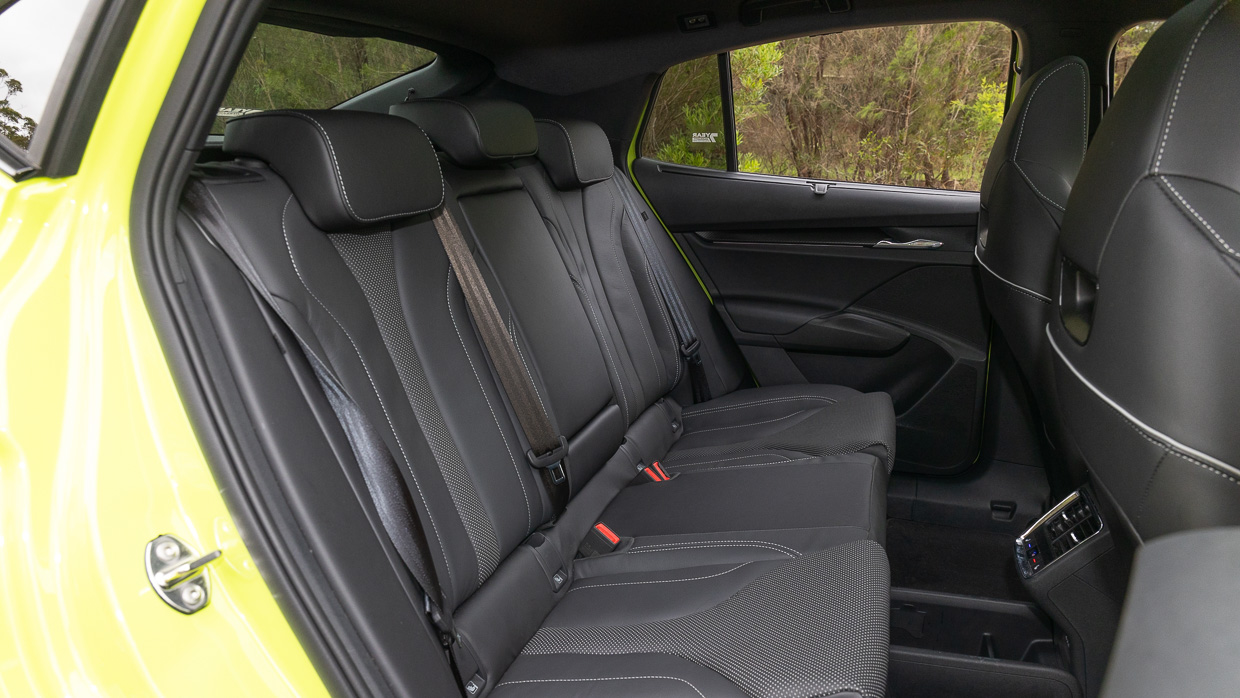
With 570 litres of boot space behind a power tailgate, the Enyaq RS offers a well-thought-out, square cargo area with plenty of packing potential.
Skoda supplies plenty of nets and thoughtful luggage dividers, and two charging cables are included. However, despite MEB being a dedicated EV platform, there’s no under-bonnet storage (or frunk).
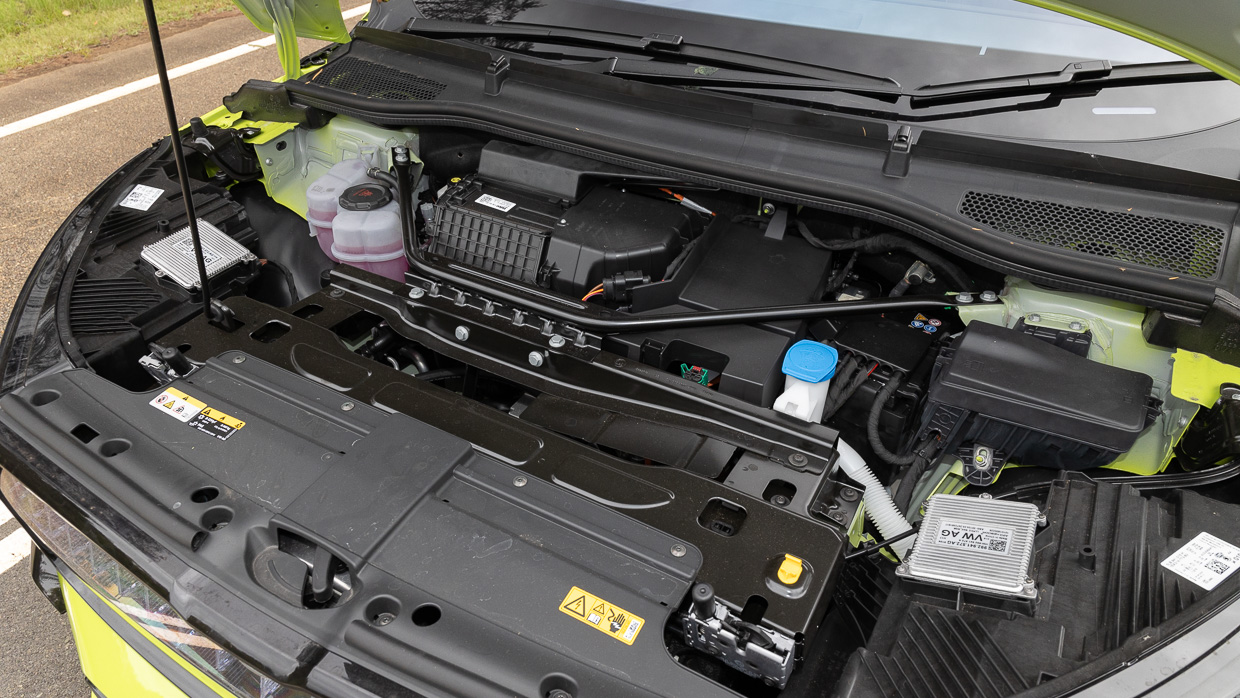
When the Skoda Enyaq Coupe launched locally, Australia’s new car crash and safety assessment body ANCAP translated the Skoda’s results from European testing performend by Euro NCAP.
Under the European protocol—and under Australia’s ratings—the Enyaq scored five stars under the 2021 protocol which was a bit more lenient than the current one, but the individual scores were impressive:
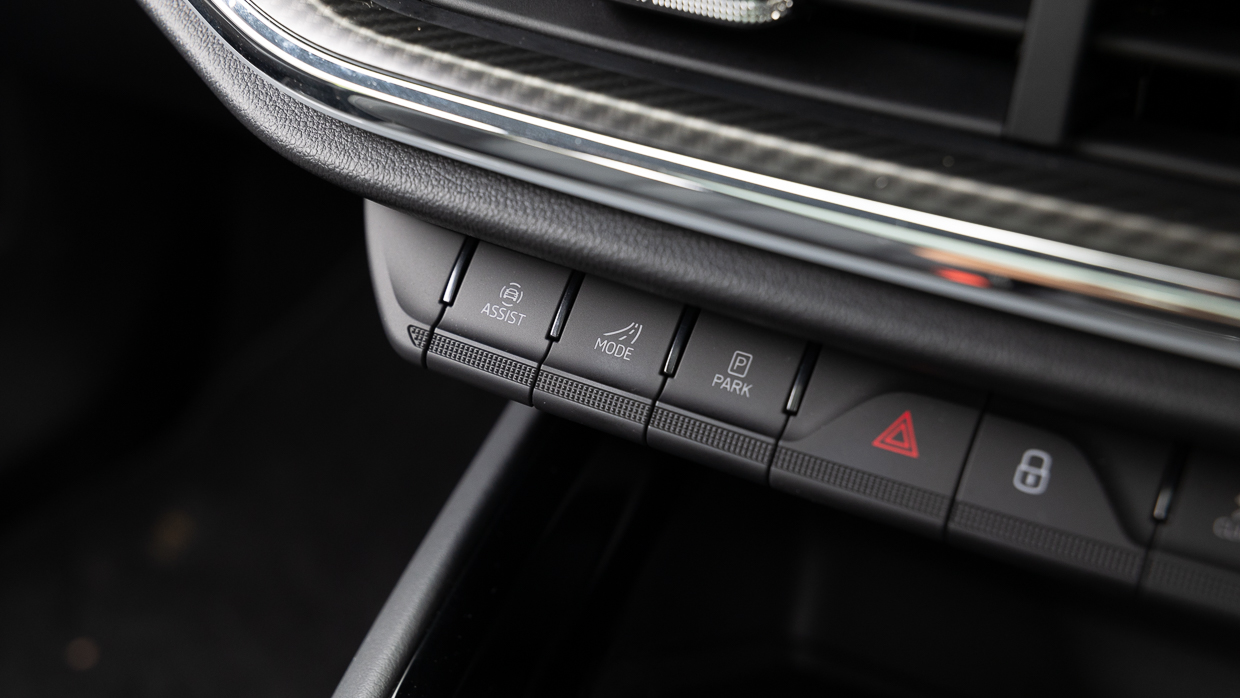
Fitted as standard to the Enyaq are the following safety features:
Euro NCAP said that reversing AEB (to prevent backing over things or people) was not fitted, which is disappointing.
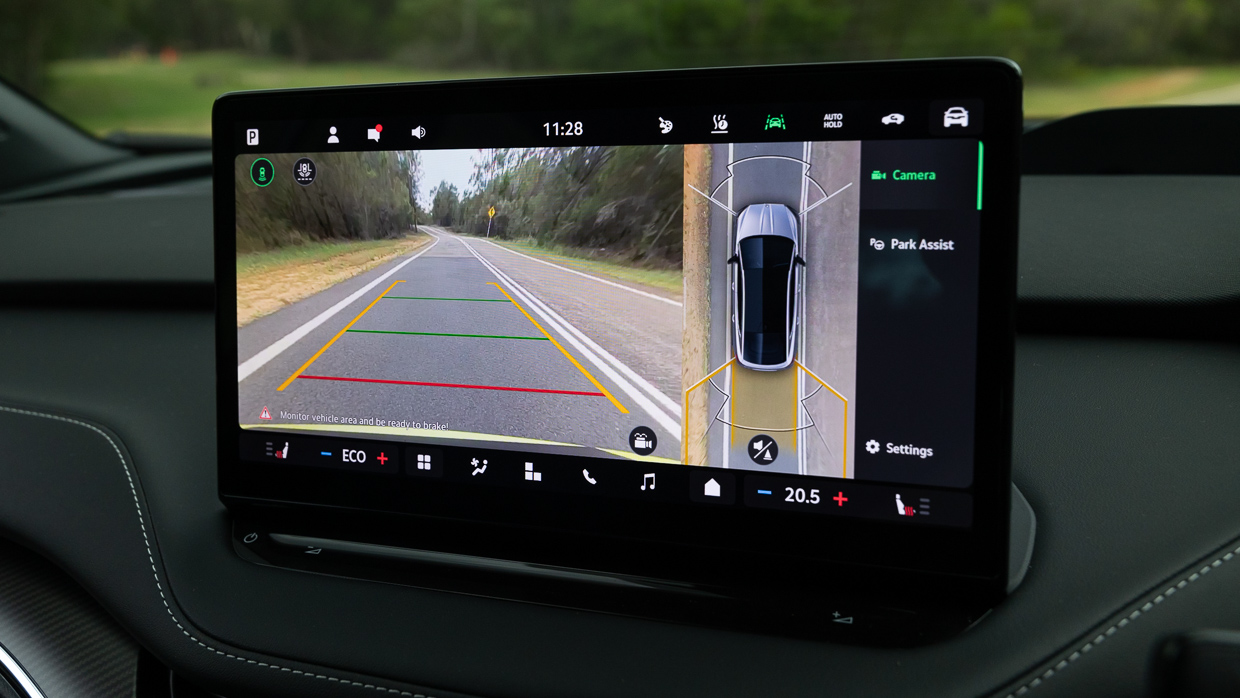
We found that the tuning of the features tested by us (adaptive cruise control, lane keeping and lane centring, blind spot monitoring and parking assistance technology) was generally well-tuned.
Only where the Enyaq was a little too wide for country lanes did we switch off the lane keeping, which can be done via two touchscreen taps.
We were impressed by the Enyaq RS’s efficiency, which—along with electricity costs—is a key factor in reducing ownership expenses for an EV like the Skoda.
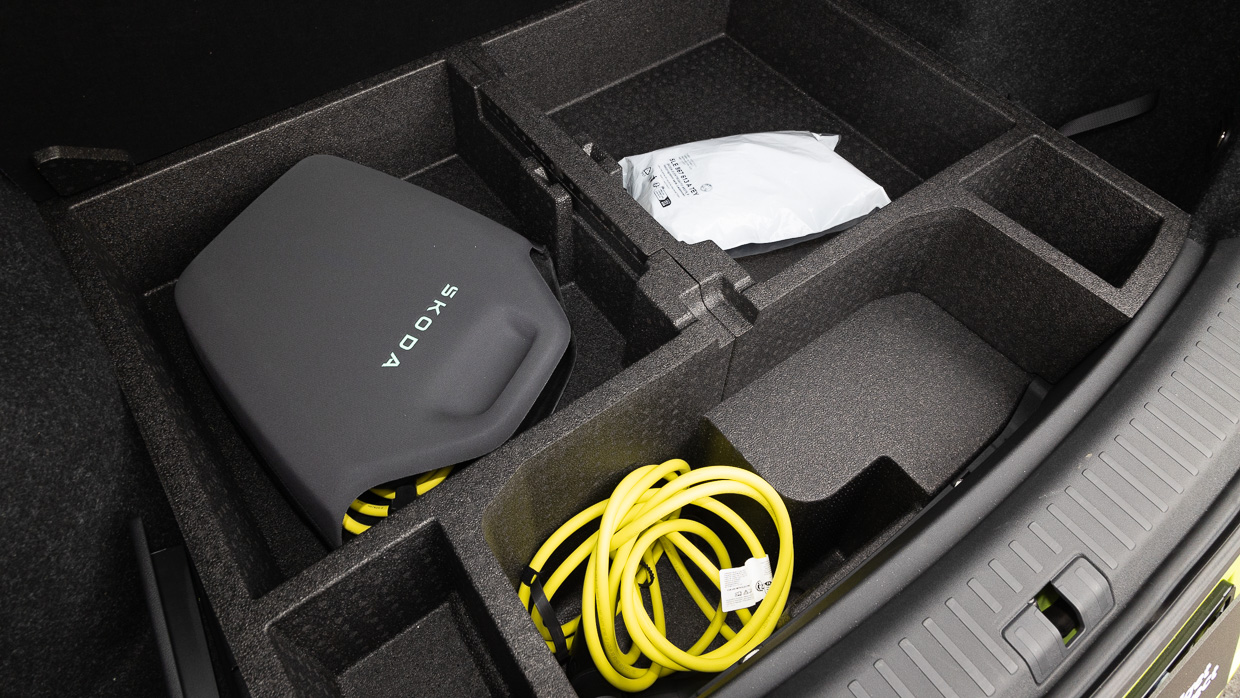
In our testing—which included highway commuting, city driving, and spirited backroad runs—the Enyaq RS returned a reasonable consumption of 17.8kWh/100km.
With its standard 77.0kWh usable battery, that equates to a real-world range of 432km (to zero). If most of your driving is commuting, expect slightly better efficiency.
Compared to the rear-wheel-drive Enyaq Sportline—which achieved 15.7kWh/100km in similar conditions (490km real range)—upgrading to the 250kW AWD RS results in just a 13% efficiency penalty, which isn’t too bad.
2025 Skoda Enyaq Sportline RWD
Charging speeds are up to 11kW for AC charging, and up to 170kW DC charging. While road-tripping, DC charging from 10 percent (43km range) to 80 percent (344km range) averages a speed of 120kW, or 28 minutes.
Skoda requires scheduled maintenance every two years or 30,000km. The brand offers discounted up-front servicing plans, which can be bundled into the vehicle purchase and transferred to subsequent owners:
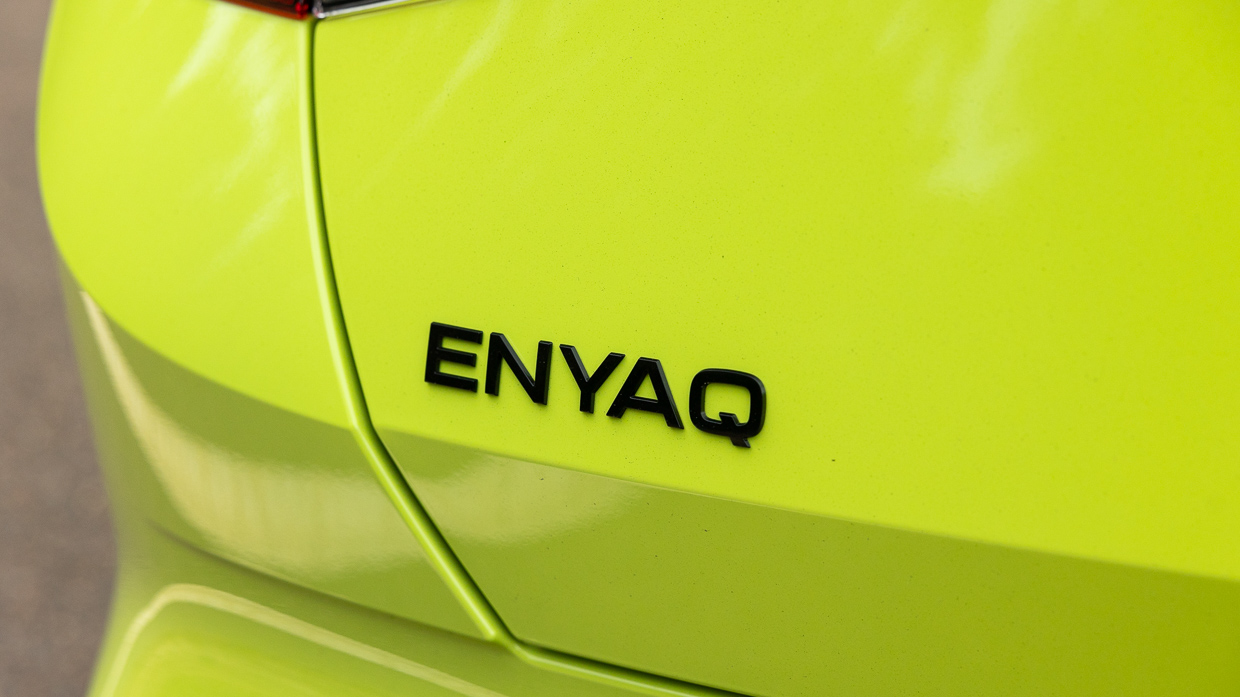
The Enyaq RS comes with a seven-year, unlimited-kilometre vehicle warranty, while the battery and high-voltage components are covered for eight years or 160,000km.
The Skoda Enyaq is an impressive and enjoyable all-round family EV—whether you’re happy with the excellent 210kW rear-wheel-drive Sportline or prefer to upgrade to the all-wheel-drive Enyaq RS.
This is a high-quality electric SUV that rides exceptionally well—even on large, stylish wheels.
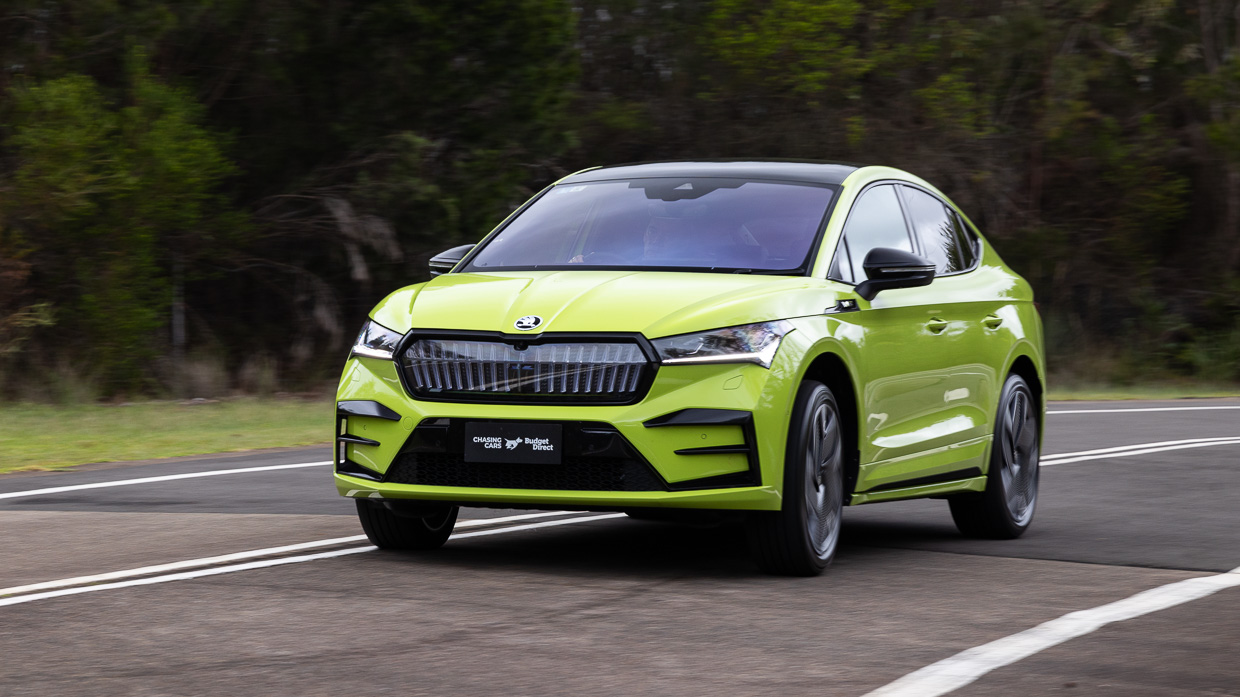
It is satisfying and fun to drive, reasonably efficient, and quite quick, with a comfortable interior. That’s a rare mix.
The Enyaq’s driving dynamics feel carefully tuned and well-resolved, with no strong evidence of cost-cutting.
There are downsides: it’s a shame that Skoda and Volkswagen still haven’t resolved proper connectivity for Australia.

We’d also prefer a power sunblind and an opening sunroof—both of which are fitted to the conventional SUV-bodied Enyaq arriving later this year, with a facelift and range expansion that could be worth the wait.
Then there’s the price—which isn’t unreasonable given the generous equipment list and generous size of the vehicle—but the price isn’t particularly sharp, either. As the Enyaq facelift approaches, though, we’d suggest keeping an eye out for sharper deals on what is a very creditable and sporty EV.
Variant tested RS (4x4)
Key specs (as tested)
About Chasing cars
Chasing Cars reviews are 100% independent.
Because we are powered by Budget Direct Insurance, we don’t receive advertising or sales revenue from car manufacturers.
We’re truly independent – giving you Australia’s best car reviews.
The estimate provided does not take into account your personal circumstances but is intended to give a general indication of the cost of insurance, in order to obtain a complete quote, please visit www.budgetdirect.com.au. Estimate includes 15%^ online discount.
^Conditions Apply
Budget Direct Insurance arranged by Auto & General Services Pty Ltd ACN 003 617 909(AGS) AFSL 241 411, for and on behalf of the insurer, Auto & General Insurance Company Limited(ABN 42 111 586 353, AFSL 285 571).Because we don’t know your financial needs, we can’t advise you if this insurance will suit you. You should consider your needs and the Product Disclosure Statement before making a decision to buy insurance. Terms and conditions apply.
Indicative quote based on assumptions including postcode , 40 year old male with no offences, licence suspensions or claims in the last 5 years, a NCD Rating 1 and no younger drivers listed. White car, driven up to 10,000kms a year, unfinanced, with no modifications, factory options and/or non-standard accessories, private use only and garaged at night.
^Online Discounts Terms & Conditions
1. Discounts apply to the premium paid for a new Budget Direct Gold Comprehensive Car Insurance, Third Party Property Only or Third Party Property, Fire & Theft Insurance policy initiated online on or after 29 March 2017. Discounts do not apply to optional Roadside Assistance.
2. Discounts do not apply to any renewal offer of insurance.
3. Discounts only apply to the insurance portion of the premium. Discounts are applied before government charges, taxes, levies and fees, including instalment processing fees (as applicable). The full extent of discounts may therefore be impacted.
4. We reserve the right to change the offer without notice.
